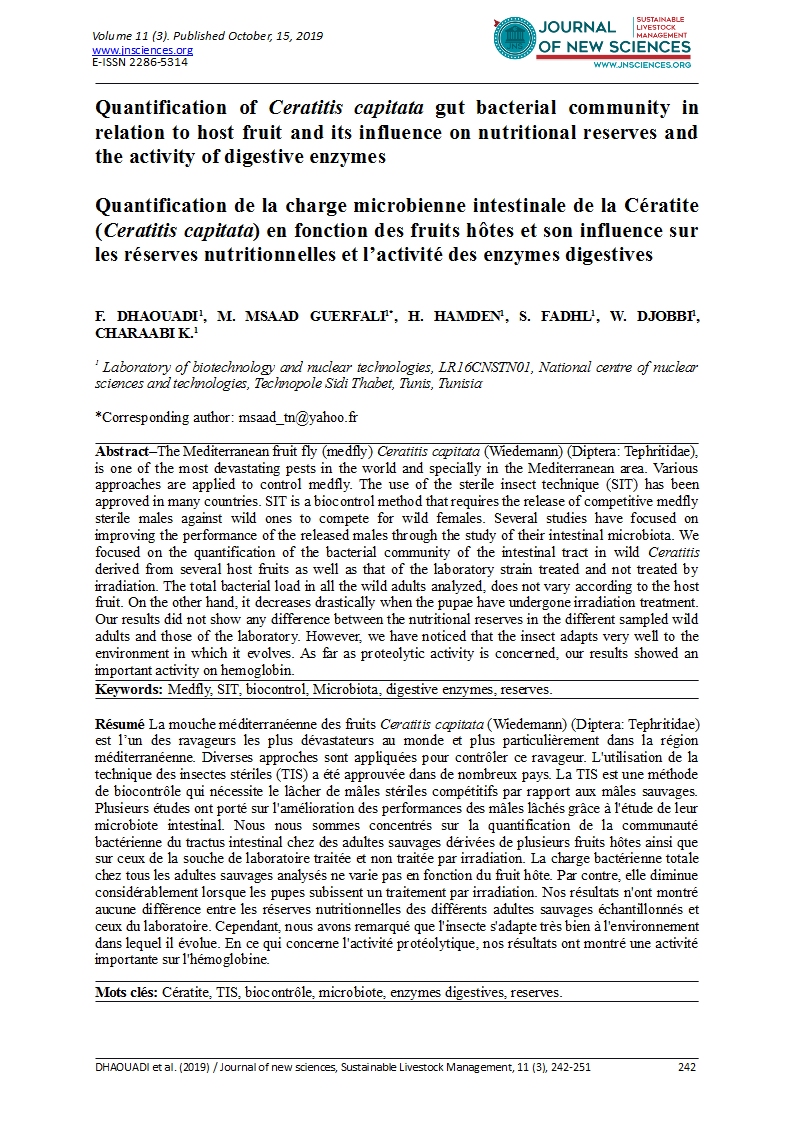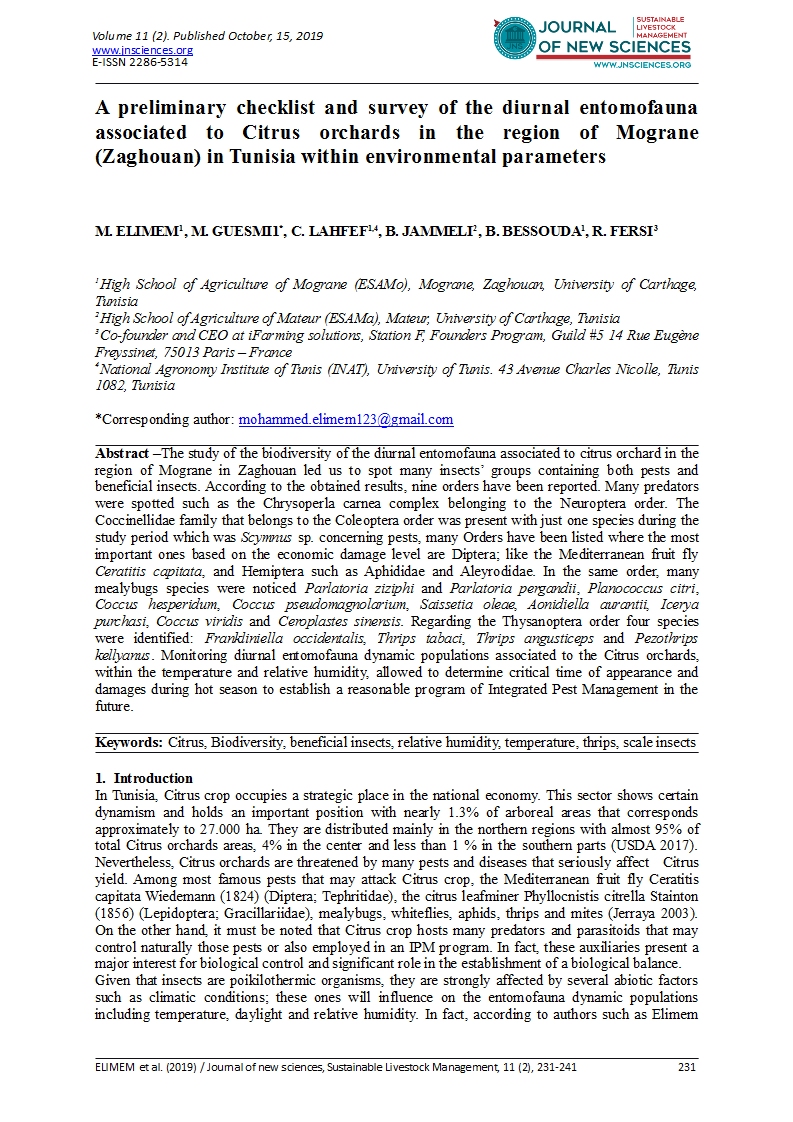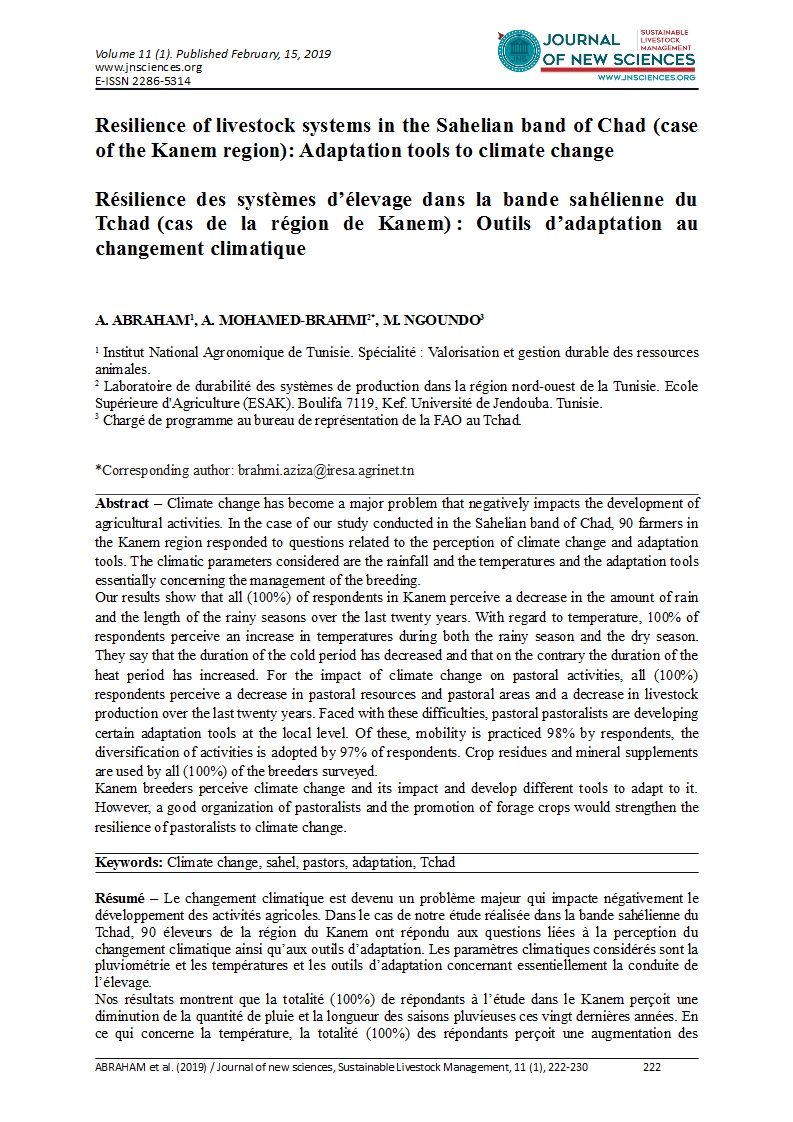- Category: Volume 11
- Hits: 6455
Quantification of Ceratitis capitata gut bacterial community in relation to host fruit and its influence on nutritional reserves and the activity of digestive enzymes

Quantification de la charge microbienne intestinale de la Cératite (Ceratitis capitata) en fonction des fruits hôtes et son influence sur les réserves nutritionnelles et l’activité des enzymes digestives
F. DHAOUADI1
M. MSAAD GUERFALI1*
H. HAMDEN1
S. FADHL1
W. DJOBBI1
CHARAABI K.1
1 Laboratory of biotechnology and nuclear technologies, LR16CNSTN01, National centre of nuclear sciences and technologies, Technopole Sidi Thabet, Tunis, Tunisia.
Abstract–The Mediterranean fruit fly (medfly) Ceratitis capitata (Wiedemann) (Diptera: Tephritidae), is one of the most devastating pests in the world and specially in the Mediterranean area. Various approaches are applied to control medfly. The use of the sterile insect technique (SIT) has been approved in many countries. SIT is a biocontrol method that requires the release of competitive medfly sterile males against wild ones to compete for wild females. Several studies have focused on improving the performance of the released males through the study of their intestinal microbiota. We focused on the quantification of the bacterial community of the intestinal tract in wild Ceratitis derived from several host fruits as well as that of the laboratory strain treated and not treated by irradiation. The total bacterial load in all the wild adults analyzed, does not vary according to the host fruit. On the other hand, it decreases drastically when the pupae have undergone irradiation treatment. Our results did not show any difference between the nutritional reserves in the different sampled wild adults and those of the laboratory. However, we have noticed that the insect adapts very well to the environment in which it evolves. As far as proteolytic activity is concerned, our results showed an important activity on hemoglobin.
Keywords: Medfly, SIT, biocontrol, Microbiota, digestive enzymes, reserves.


